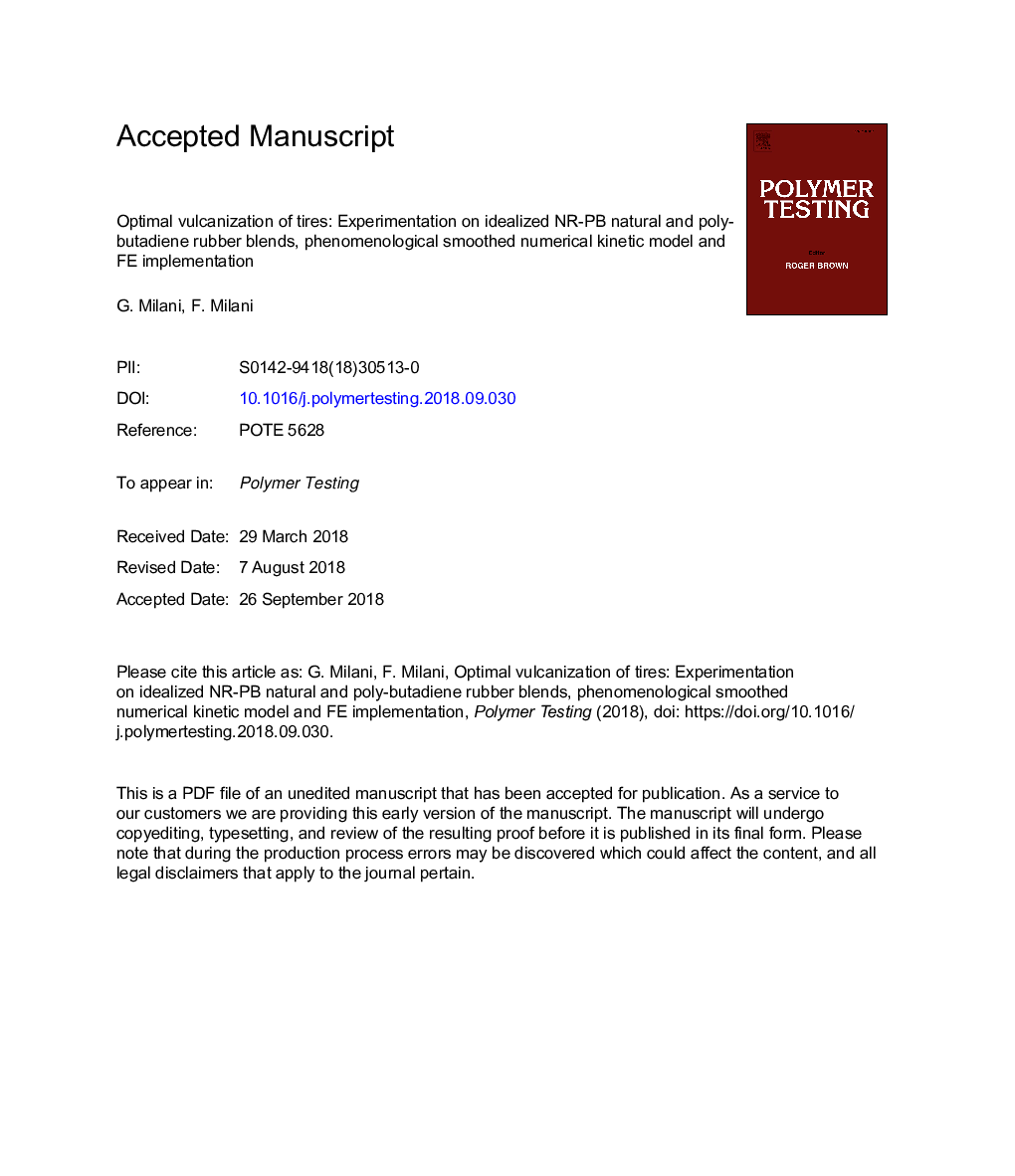| کد مقاله | کد نشریه | سال انتشار | مقاله انگلیسی | نسخه تمام متن |
|---|---|---|---|---|
| 11020179 | 1717605 | 2018 | 41 صفحه PDF | دانلود رایگان |
عنوان انگلیسی مقاله ISI
Optimal vulcanization of tires: Experimentation on idealized NR-PB natural and poly-butadiene rubber blends, phenomenological smoothed numerical kinetic model and FE implementation
دانلود مقاله + سفارش ترجمه
دانلود مقاله ISI انگلیسی
رایگان برای ایرانیان
کلمات کلیدی
موضوعات مرتبط
مهندسی و علوم پایه
شیمی
شیمی آلی
پیش نمایش صفحه اول مقاله

چکیده انگلیسی
An integrated simulation tool for the optimal vulcanization of tires is presented. Three are the main issues discussed on the optimal vulcanization of 3D items with complex geometry, namely: (i) the results of a preliminary realistic experimental campaign on rubber blends constituted by NR and PB in two different proportions and cured with different accelerators; (ii) a phenomenological numerical smoothing and kinetic model of interpretation of the rheometer curves experimentally obtained; (iii) the implementation of the numerical model into a commercial FE software to simulate the optimal vulcanization of car tires industrially produced. The experimental campaign is carried out on different typologies of rubber blends constituted by NR and PB at 70-30% and 50-50% concentrations, with sulfur at 1 phr and two accelerants (TBSS and DPG) at 1 and 3 phr, under standard vulcanization conditions (rheometer) at 150°, 170° and 180â¯Â°C. The numerical kinetic model uses such rheometer experimental curves to estimate kinetic constants of the cure reactions, preliminarily smoothing input data through four C1 cubic splines, with spline knots interactively selected by the user with a mouse click. Position of knots and vulcanization rates in correspondence of knots are then adjusted automatically by means of a non-linear least squares optimization procedure. In this way a set of meta-data (fitting optimally experimental values) is obtained, with a smooth prediction of the local curing rate. The kinetic approach used is characterized by three kinetic constants, describing two reactions occurring in parallel and in series and suitably accounting for possible reversion. The determination of the three kinetic constants characterizing the model is performed graphically in a quasi-analytical form. The numerical model is then nested into a Finite Element FE commercial code, to predict the crosslinking degree in real curing conditions, i.e. where the temperature is not constant. A real tire is finally analyzed during the curing process and useful indications are provided on the optimal curing temperature and time to adopt.
ناشر
Database: Elsevier - ScienceDirect (ساینس دایرکت)
Journal: Polymer Testing - Volume 72, December 2018, Pages 63-85
Journal: Polymer Testing - Volume 72, December 2018, Pages 63-85
نویسندگان
G. Milani, F. Milani,